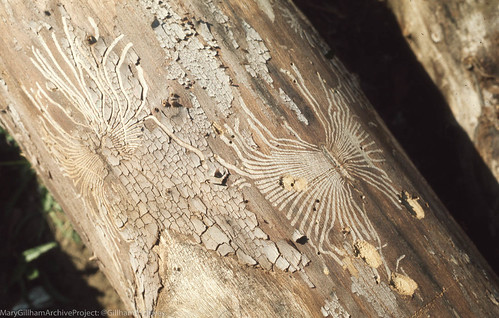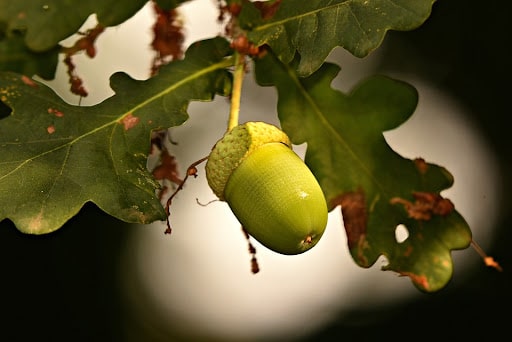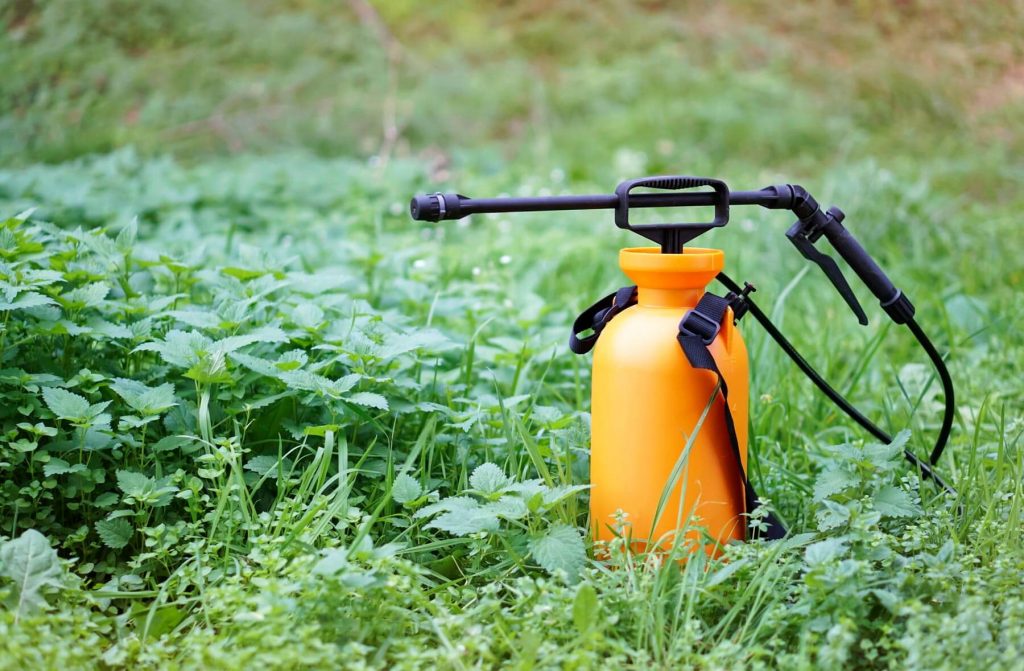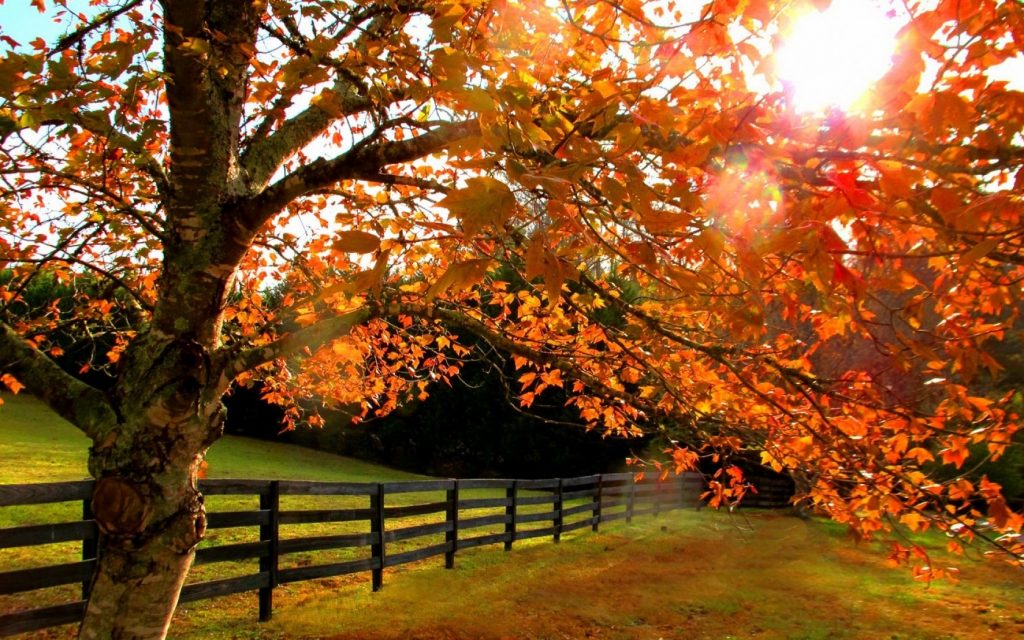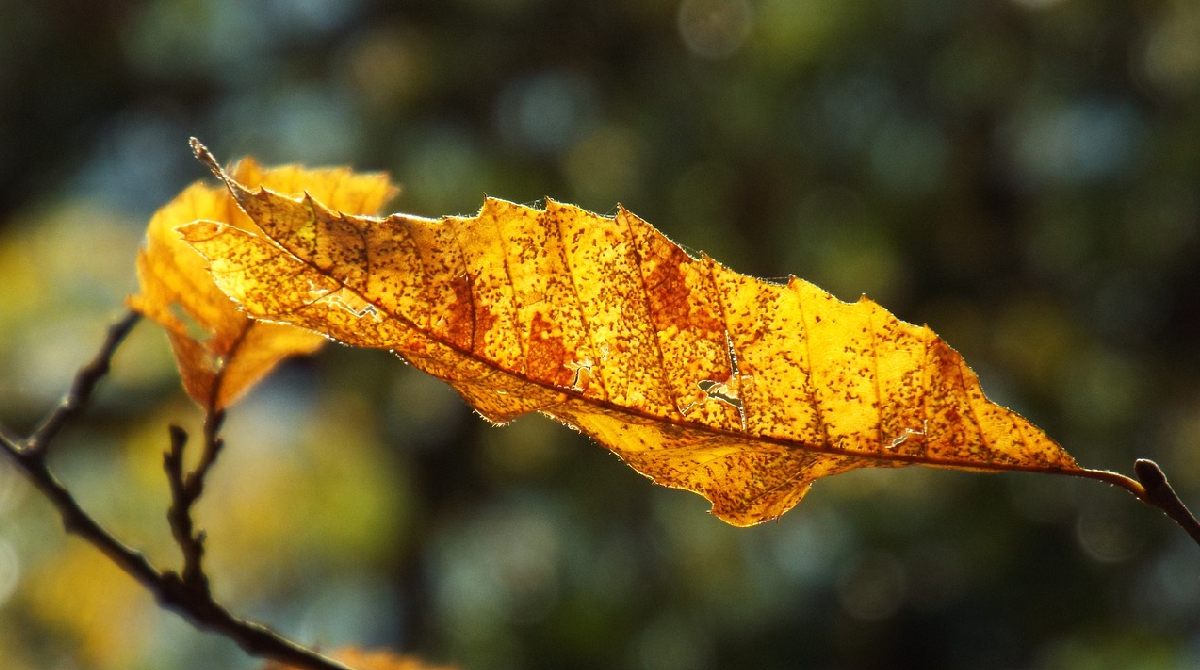
Fall Leaf Coloration or Iron Deficiency in Trees?
Date September 11, 2022
Category
As we head into a new season, trees signal the change with striking leaf colorations ranging from gold, rusty orange, bright red, and everything in between. While this beautiful transformation is a natural part of a tree’s life cycle, it can mask the symptoms of iron deficiency.
Since approximately 75% of Texas soil is alkaline, iron chlorosis is a major threat to North Texas tree health. Iron chlorosis is characterized by the yellowing of tree leaves caused by a deficiency in iron. While yellowing leaves are a symptom of many tree health concerns, it’s important to understand the causes of iron chlorosis in trees so we can take steps for prevention and treatment.
What Causes Iron Deficiency in Trees?
Iron chlorosis occurs when tree roots cannot absorb enough iron from the soil. Iron is essential for chlorophyll formation, which produces carbohydrates and gives trees the necessary nutrients to support tree health. Even if the soil contains iron, it may be unavailable to plants growing in alkaline soils (pH greater than 7). Alkaline soil can cause chemical reactions that make the iron solid and inaccessible to plant roots. The iron will stay this way until the soil is treated. Stressors that intensify iron chlorosis on trees include:
• Overwatering/poor drainage
• Over-fertilizing
• Soil compaction
• Nearby construction
• Exposure to hard water and lime
• Cool soil temperatures
Keeping tree foliage green for as long as possible is vital since late-season photosynthesis produces enough carbohydrates going into winter. The stored carbohydrates are essential for fall and winter root development and spring leaf-out.
Iron Chlorosis Symptoms
In the fall, leaves naturally decline and die as chlorophyll slowly fades, producing different shades of color. If the tree leaves turn yellow prematurely, stay yellow, or lighten to shades of white, your tree may have iron chlorosis. Distinctive signs of iron deficiency on trees include:
• Yellow leaves while veins remain dark green
• Browning at the edges and tips of leaves
• Yellow turns to shades of white as chlorosis worsens
• Branch dieback
Other Causes of Yellowing Leaves
• Early signs of aphid infestation
• Powdery mildew
• Scale insects
• Spider mites
• Herbicide damage
• Bacterial and fungal infection
The best way to determine the cause of yellowing leaves or any other condition impacting tree health is to have an ISA Certified Arborist test your soil and diagnose your tree’s health.
Commonly Susceptible Trees
Trees that are non-native, poorly adapted to alkaline soils, or thrive in highly acidic soils commonly suffer from iron chlorosis in North Texas. Some of which include:
• Maples
• Shumard red oak
• Live oak
• Cypress
• Pines
• Hollies
• Sweetgum
Prevention
Before planting a tree, determine whether it is well-suited to the type of soil you have and if it’s known to be chlorotic. Routine tree care, maintenance, and fertilization enable trees to develop resistance to various tree diseases, pests, and nutrient deficiencies. Homeowners can also reduce watering or install drainage to prevent further compaction and soil saturation.
Prolonged chlorosis can be fatal, so it’s important to stay vigilant and take proactive care of your trees before it’s too late.
Iron Chlorosis Treatment
• Improve soil condition – applying a layer of organic compost is highly beneficial for the long-term recovery of iron chlorosis.
• Soil amendments – making your soil more acidic by adding amendments like sulfur are known to reduce alkalinity in soil and increase iron absorption. Before changing your soil pH, consult a Dallas tree care specialist to prevent further harm to your trees and nearby plants.
• Foliar spray – spraying affected tree leaves with a solution, like iron sulfate, during the growing season provides a quick treatment but is not a long-term solution.
• Tree injections – injecting nutrients directly into a tree’s vascular system or tissue by drilling holes into the tree’s trunk or root flare. This treatment method requires professional application by a tree care expert.
• Root aeration – With an aeration tool, tree care specialists can reduce soil compaction and increase oxygen availability for plant roots.
It should be noted that any application to the tree or soil requires the expertise of an ISA Certified Arborist. Doing so without the proper training can be detrimental to tree health and worsen existing problems.
TreeNewal Can Help
If you think your tree is suffering from iron chlorosis or other environmental conditions, immediately contact a Dallas tree care expert. Our team of ISA Certified Arborists understand the native ecosystem and how each tree responds to environmental stressors. We can conduct a comprehensive tree health assessment to determine the best course of action for your trees. Our services include tree nutrition, insect and disease management, soil conditioning, aeration, and more. Give us a call at (817) 592-6846 or contact us for industry-leading plant health services.
To learn more about Fall Leaf Coloration or Iron Deficiency in Trees?, call our Argyle and Southlake-based teams
at (817) 592-6846 or send us a message.
We’re a little different than the average tree services company.
Learn more about TreeNewal’s ISA Certified Arborists!
Our Dallas/Fort Worth-based tree doctors can explain how sustainable tree care services add more value to your bottom line.
Healthy trees, healthy lives.
